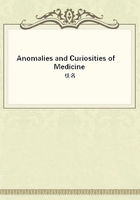
第424章
Asiatic cholera probably originated centuries ago in India, where it is now endemic and rages to such an extent as to destroy 750,000 inhabitants in the space of five years. There is questionable evidence of the existence of cholera to be found in the writings of some of the classic Grecian and Indian authors, almost as far back as the beginning of the Christian era. In the sixteenth and seventeenth centuries travelers in the East gave accounts of this disease. Sonnerat, a French traveler, describes a pestilence having all the characteristics of Asiatic cholera which prevailed in the neighborhood of Pondicherry and the Coromandel coast from 1768 to 1769, and which, within a year, carried off 60,000 of those attacked. According to Rohe, Jasper Correa, an officer in Vasco da Gama's expedition to Calicut, states that Zamorin, the chief of Calicut, lost 20,000 troops by the disease. Although cholera has frequently extended to Europe and America, its ravages have never been nearly as extensive as in the Oriental outbreaks. An excellent short historic sketch of the epidemics of the cholera observed beyond the borders of India has been given by Rohe. In 1817 cholera crossed the boundaries of India, advancing southeasterly to Ceylon, and westerly to Mauritius, reaching the African coast in 1820. In the following two years it devastated the Chinese Empire and invaded Japan, appearing at the port of Nagasaki in 1822. It advanced into Asiatic Russia, and appeared as far east as St. Petersburg in 1830, from whence it spread north to Finland. In 1831 it passed through Germany, invading France and the western borders of Europe, entering the British Isles in 1832, and crossing the Atlantic Ocean for the first time, appeared in Canada, having been carried thence by some Irish emigrants.
From Canada it directly made its way to the United States by way of Detroit. In the same year (1832) it appeared in New York and rapidly spread along the Atlantic coast.
"During the winter of 1832 it appeared at New Orleans, and passed thence up the Mississippi Valley. Extending into the Indian country, causing sad havoc among the aborigines, it advanced westward until its further progress was stayed by the shores of the Pacific Ocean. In 1834 it reappeared on the east coast of the United States, but did not gain much headway, and in the following year New Orleans was again invaded by way of Cuba. It was again imported into Mexico in 1833. In 1835 it appeared for the first time in South America, being restricted, however, to a mild epidemic on the Guiana coast.
"In 1846 the disease again advanced beyond its natural confines, reaching Europe by way of Turkey, in 1848. In the autumn of this year it also appeared in Great Britain, Belgium, the Netherlands, Sweden, and the United States, entering by way of New York and New Orleans. In the succeeding two years the entire extent of country east of the Rocky Mountains was invaded. During 1851 and 1852 the disease was frequently imported by emigrants, who were annually arriving in great numbers from the various infected countries of Europe. In 1853 and 1854 cholera again prevailed extensively in this country, being, however, traceable to renewed importation of infected material from abroad. In the following two years it also broke out in numerous South American States, where it prevailed at intervals until 1863. Hardly had this third great pandemic come to an end before the disease again advanced from the Ganges, spreading throughout India, and extending to China, Japan, and the East Indian Archipelago, during the years 1863 to 1865. In the latter year it reached Europe by way of Malta and Marseilles. It rapidly spread over the Continent, and in 1866 was imported into this country by way of Halifax, New York, and New Orleans. This epidemic prevailed extensively in the Western States, but produced only slight ravages on the Atlantic Coast, being kept in check by appropriate sanitary measures. In the same year (1866) the disease was also carried to South America, and invaded for the first time the states bordering on the Rio de la Plata and the Pacific coast of the Continent.
"Cholera never entirely disappeared in Russia during the latter half of the sixth decade, and in 1870 it again broke out with violence, carrying off a quarter of a million of the inhabitants before dying out in 1873. It spread from Russia into Germany and France and was imported, in 1873, into this country, entering by way of New Orleans and extending up the Mississippi Valley. None of the Atlantic coast cities suffered from this epidemic in 1873, and since that year the United States has been entirely free from the disease, with the exception of a few imported cases in New York harbor in 1887" (and in 1893). In 1883 an epidemic of cholera raged in Egypt and spread to many of the Mediterranean ports, and reappeared in 1885 with renewed violence. In Spain alone during this latter epidemic the total number of cases was over one-third of a million, with nearly 120,000 deaths. In 1886cholera caused at least 100,000 deaths in Japan. In the latter part of 1886 cholera was carried from Genoa to Buenos Ayres, and crossing the Andean range invaded the Pacific coast for a second time. In Chili alone there were over 10,000 deaths from cholera in the first six months of 1887. Since then the entire Western hemisphere has been virtually free from the disease.
In 1889 there was an epidemic of cholera in the Orient; and in 1892 and 1893 it broke out along the shores of the Mediterranean, invading all the lines of commerce of Europe, Hamburg in the North and Marseilles in the South being especially affected. In the summer of 1893 a few cases appeared in New York Bay and several in New York city, but rigorous quarantine methods prevented any further spread.